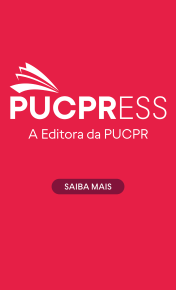L’Aurora del sebastianismo: le fonti profetiche dell’encuberto | The dawn of Sebastianism: the prophetic sources of encobert
DOI:
https://doi.org/10.1590/2965-1557.036.e202430161Resumen
La genesi dottrinale del sebastianismo è spesso riportata completamente all’interno della cultura popolare portoghese: si ritiene che D. João de Castro, inventore della leggenda del re redivivo, avrebbe rimodellato la figura dell’Encuberto assumendola dalle Trovas di Bandarra, calzolaio di Trancoso. In verità, la retorica dell’Encuberto risulta diffusa nella penisola iberica ben prima delle Trovas. D. João stesso ne segnala altri due “preannunci”, nel Vespertilio profetizzato da Arnaldo da Villanova e nel Sol obscuratus dell’Oracolo di Cirillo. Più in generale, l’articolo intende contribuire alla conoscenza della vasta biblioteca profetica e messianica di D. João, e mostrare così che la leggenda di D. Sebastião nasce e si sviluppa alla confluenza di molteplici tradizioni circolanti nell’Occidente europeo a partire dall’Alto Medioevo.
Resumo
A gênese doutrinária do sebastianismo é muitas vezes traçada inteiramente na cultura popular portuguesa. Nessa perspectiva, acredita-se que D. João de Castro, inventor da lenda do rei redimido, reformulou a figura do Encuberto retirando-a das Trovas de Bandarra, sapateiro de Trancoso. Na verdade, a retórica do Encuberto está difundida na Península Ibérica muito antes das Trovas. O próprio D. João aponta dois outros "pré-anúncios", no Morcego profetizado por Arnau de Vilanova e no Sol obscuratus do Oráculo de Cirilo. Em termos mais gerais, o artigo pretende contribuir para o conhecimento da vasta biblioteca profética e messiânica de D. João e, assim, mostrar que a lenda de D. Sebastião nasceu e se desenvolveu na confluência de múltiplas tradições que circulavam na Europa Ocidental desde o início da Idade Média.
Descargas
Descargas
Publicado
Cómo citar
Número
Sección
Licencia
Derechos de autor 2024 Editora Universitária Champagnat

Esta obra está bajo una licencia internacional Creative Commons Atribución 4.0.
El autor transfiere, por medio de cesión, a la EDITORA UNIVERSITARIA CHAMPAGNAT, persona jurídica de derecho privado, inscrita en el CNPJ/MF bajo el n.º 76.659.820/0009-09, establecida en la (calle) Rua Imaculada Conceição, n.º 1155, Prado Velho, CEP 80.215-901, en la ciudad de Curitiba/PR, los derechos abajo especificados y se compromete a cumplir lo que sigue:
Los autores afirman que la obra/material es de su autoría y asumen integral responsabilidad frente a terceros, ya sea de naturaleza moral o patrimonial, en razón de su contenido, declarando, desde ya, que la obra/material a ser entregada es original y no infringe derechos de propiedad intelectual de terceros.
- Los autores concuerdan en ceder de forma plena, total y definitiva los derechos patrimoniales de la obra/material a la EDITORA UNIVERSITARIA CHAMPAGNAT, a título gratuito y en carácter de exclusividad.
- LA CESIONARIA empleará la obra/material de la forma como mejor le convenga, de forma impresa y/u on line, incluso en el sitio del periódico de la EDITORA UNIVERSITARIA CHAMPAGNAT, pudiendo utilizar, disfrutar y disponer del mismo, en todo o en parte, para:
- Autorizar su utilización por terceros, como parte integrante de otras obras.
- Editar, grabar e imprimir, cuantas veces sean necesarias.
- Reproducir en cantidades que juzgue necesarias, de forma tangible e intangible.
- Adaptar, modificar, condensar, resumir, reducir, compilar, ampliar, alterar, mezclar con otros contenidos, incluir imágenes, gráficos, objetos digitales, infográficos e hyperlinks, ilustrar, diagramar, fraccionar, actualizar y realizar otras transformaciones, siendo necesaria la participación o autorización expresa de los autores.
- Traducir para cualquier idioma.
- Incluir en fonograma o producción audiovisual.
- Distribuir.
- Distribuir mediante cable, fibra óptica, satélite, ondas o cualquier otro sistema que permite al usuario realizar la selección de la obra o producción para recibirla en tiempo y lugar previamente determinados por quien formula la demanda y en los casos en que el acceso a las obras o producciones se haga por cualquier sistema que importe en pago por el usuario.
- Incluir y almacenar en banco de datos, físico, digital o virtual, incluso nube.
- Comunicar directa y/o indirectamente al público.
- Incluir en base de datos, archivar en formato impreso, almacenar en computador, incluso en sistema de nube, microfilmar y las demás formas de archivo del género;
- Comercializar, divulgar, vehicular, publicar etc.
- Otro tipo de modalidades de utilización existentes o que vengan a ser inventadas.
- Los autores concuerdan en conceder la cesión de los derechos de la primera publicación (carácter inédito) a la revista, licenciada bajo la CREATIVE COMMONS ATTRIBUTION LICENSE, que permite compartir el trabajo con reconocimiento de la autoría.
- Los autores autorizan la reproducción y la citación de su trabajo en repositorios institucionales, página personal, trabajos científicos, entre otros, desde que la fuente sea citada.
- La presente cesión es válida para todo el territorio nacional y para el exterior.
- Este término entra en vigor en la fecha de su firma y es firmado por las partes en carácter irrevocable e irretractable, obligando definitivamente las partes y sus sucesores a cualquier título.
- La no aceptación del artículo, por la EDITORA UNIVERSITARIA CHAMPAGNAT, hará que la presente declaración sea automáticamente nula y sin efecto.




